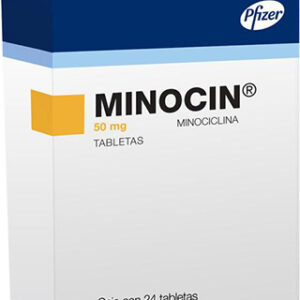Brand and Generic Names
Ciplox is a brand name medication, and its generic counterpart is known as ciprofloxacin. It is classified as a type of antibiotic known as a fluoroquinolone and it is used to treat various bacterial infections.
Indications and Usage
Ciplox is indicated for the treatment of several types of bacterial infections, including urinary tract infections, respiratory tract infections, skin and soft tissue infections, bone and joint infections, and certain types of diarrhea caused by infectious bacteria. It is also used as a preventative measure against inhalational anthrax post-exposure.
Available Dosage Forms
Ciplox is available in oral tablet form, oral suspension, and an ophthalmic solution for eye infections. The concentration of the medication varies depending on the form; the tablets commonly come in 250 mg, 500 mg, and 750 mg strengths.
Active and Inactive Ingredients
The active ingredient in Ciplox is ciprofloxacin. Inactive ingredients can include microcrystalline cellulose, sodium starch glycolate, colloidal silicon dioxide, and magnesium stearate, among others, which may vary based on the manufacturer.
Mechanism of Action
Ciprofloxacin, the active ingredient in Ciplox, works by inhibiting the bacterial DNA gyrase and topoisomerase IV enzymes, which are necessary for DNA replication and transcription. By doing so, it prevents bacterial cell division and leads to the death of the bacteria.
Dosing Information
Dosing of Ciplox will vary widely depending on the infection being treated, the patient’s age, kidney function, and other medical conditions. For adults, the typical dose range is 250 mg to 750 mg twice daily. For children, the dose is calculated based on body weight.
Dose Adjustment Considerations
In patients with renal impairment, dose adjustments may be necessary to avoid accumulation of the drug and potential toxicity. Elderly patients may also require adjusted doses based on renal function.
Administration Instructions
Ciplox tablets should be swallowed whole with a glass of water. They can be taken with or without food but should not be taken with dairy products or mineral supplements due to interactions that can affect absorption.
Drug Interactions
Ciplox can interact with antacids, multivitamins, and other supplements containing calcium, magnesium, aluminum, or iron. Nonsteroidal anti-inflammatory drugs (NSAIDs) may increase the risk of central nervous system stimulation and seizures when used with Ciplox. It can also interact with theophylline, warfarin, and certain anti-arrhythmic medications.
Pharmacokinetics
After oral administration, ciprofloxacin is rapidly absorbed, with peak plasma concentrations occurring within 1-2 hours. Food delays ciprofloxacin absorption but does not affect the overall bioavailability. The drug is widely distributed in body tissues and fluids. It is metabolized by the liver and excreted primarily by the kidneys.
Storage Guidelines
Ciplox tablets and suspension should be stored at room temperature, away from moisture and excessive heat. The oral suspension should be used within 14 days after reconstitution and should not be frozen. Ophthalmic solutions should be stored as advised on the label.
Special Patient Populations
Special caution is necessary when prescribing Ciplox to pregnant or breastfeeding women, as it may cause harm to the fetus or nursing infant. Use in pediatric populations carries the risk of joint and tissue damage and must be approached with caution. Elderly patients are at an increased risk for tendonitis and tendon rupture.
Monitoring Parameters
Patients receiving Ciplox should be monitored for signs and symptoms of anaphylaxis, for the development of tendon pain or inflammation, and for changes in kidney function, particularly in those with pre-existing renal impairment.
Signs of Overdose
An overdose of Ciplox can lead to renal dysfunction, seizures, hallucinations, and severe central nervous system effects. Supportive measures and symptomatic treatment are recommended in the event of an overdose.






Reviews
There are no reviews yet.